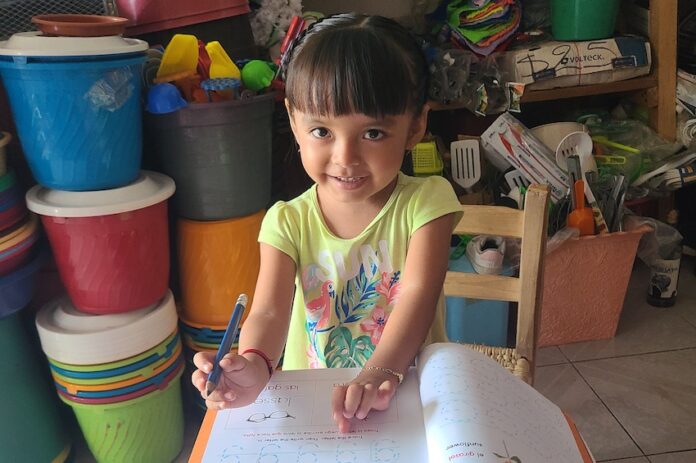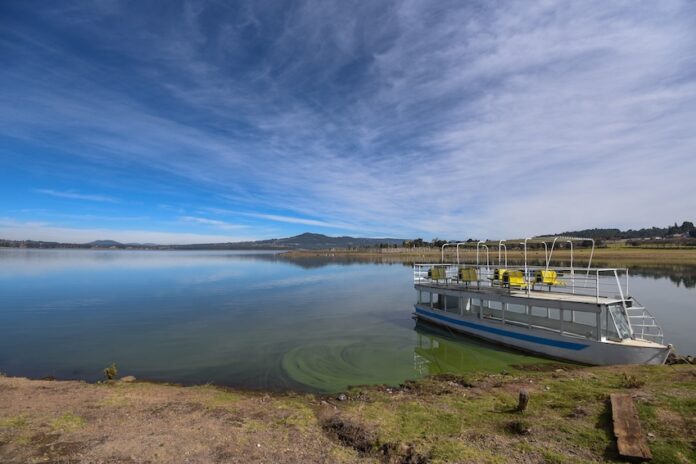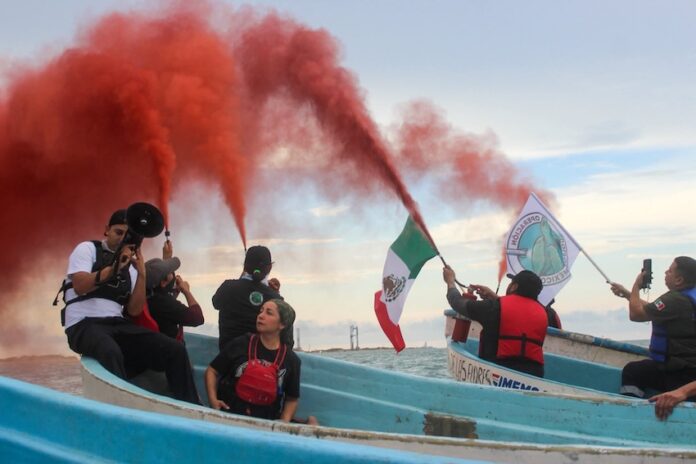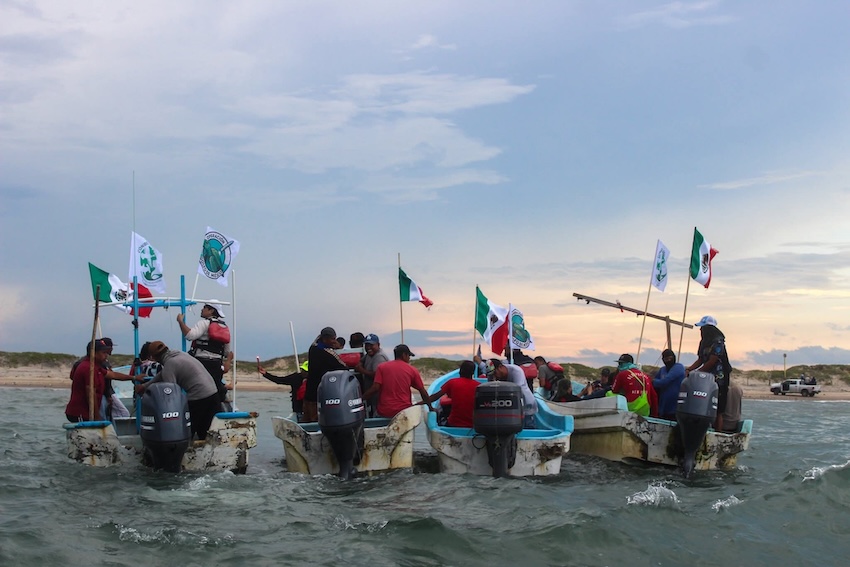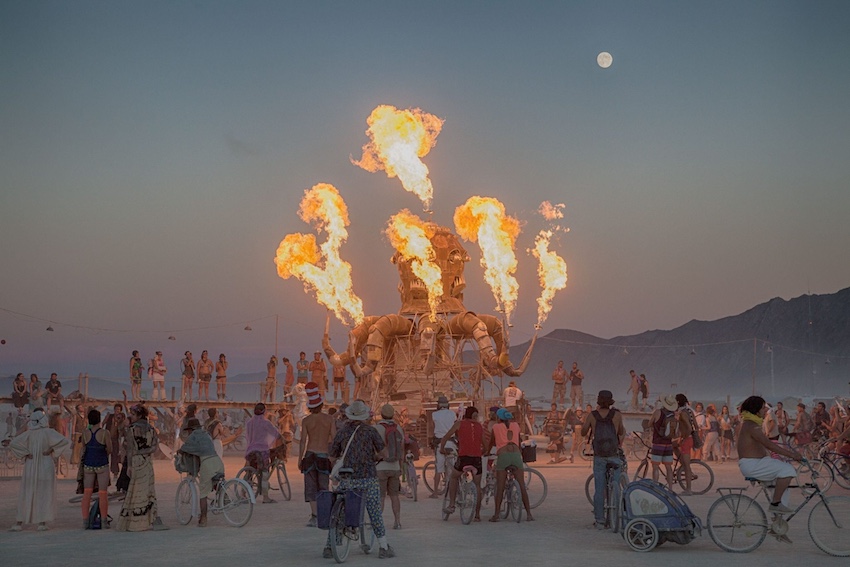Summer vacation in Mexico means millions of the country’s residents flock to popular beaches. Including those in Zihuatanejo-Ixtapa, Guerrero, on Mexico’s Pacific Coast.
But summer at the beach isn’t a vacation for dozens of local families, many of them single-mother households. Instead, local vendors sell everything from sombreros and hammocks to handmade necklaces and toys. Their children, aged 5 to 17, work alongside them.
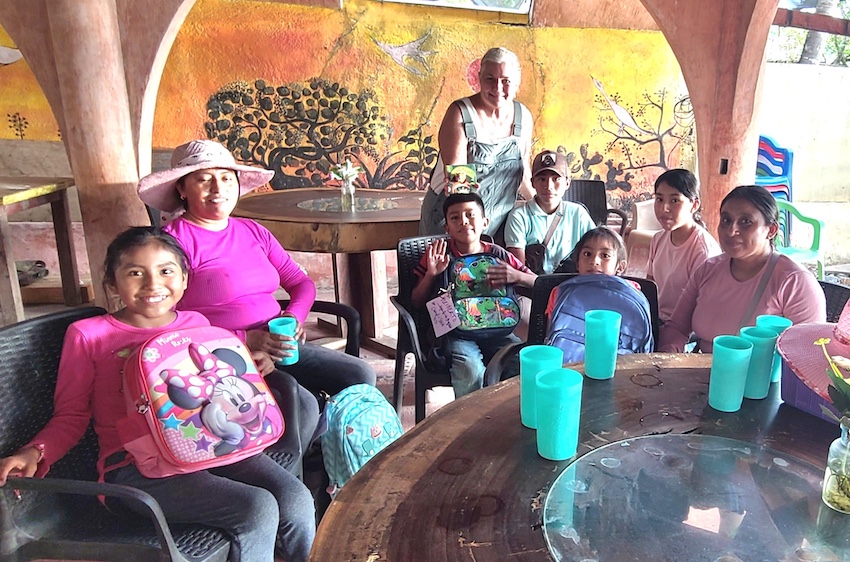
During this time of year, vendors travel from remote mountain cities and villages in Guerrero, like Chilpancingo and Chilapa, to sell gum, snacks, handicrafts and other wares. Others arrive from Mexico City and Michoacán. For many, each day is a challenge to earn money for food, simple lodgings and eventually, bus fare back home. Many of these seasonal migrants speak an Indigenous language such as Nahuatl or Mixtec as their mother tongue.
In mid-July, Marta, age 28, traveled over 1,000 miles on a two-day bus trip from her village two states away in Chiapas. Her boys, Dylan, age 5, and Edward, age 8, walk long hours with her in the hot sun every day as she works to sell the embroidered clothing and woven bracelets she has made. They rent a simple room with no kitchen, no refrigerator and no AC. Tzotzil is their native language. Children like these are now my students. I’m a volunteer street teacher.
Literacy, language diversity and access to education for all
According to the 2020 census by the National Institute of Statistics and Geography (INEGI), 6.1% of Mexico’s population aged three years and over are registered as speaking an Indigenous language. Nahuatl continues to be the most widely spoken, with 22.5% of Indigenous language speakers, followed by Mayan (10.6%). Many of these Indigenous people live in poverty.
As a career writer and educator, I have had a 25-year relationship with Zihuatanejo and Mexico. I first came to Zihuatanejo from Boston, Massachusetts, for a yoga retreat vacation in February 1999. I kept coming back. Not only for the beautiful beaches, fresh seafood and vibrant local culture, but because I took a photo of small children selling gum and wondered: “Why aren’t these children in school?”
My curiosity led me to meet a pioneering educator, Marina Sánchez Hernández, who had begun a rustic school for about 90 local working Indigenous children. Others began to help Marina, raising money, doing repairs, bringing in school supplies, and creating awareness to help achieve her dream of a permanent, multilingual Netza School.
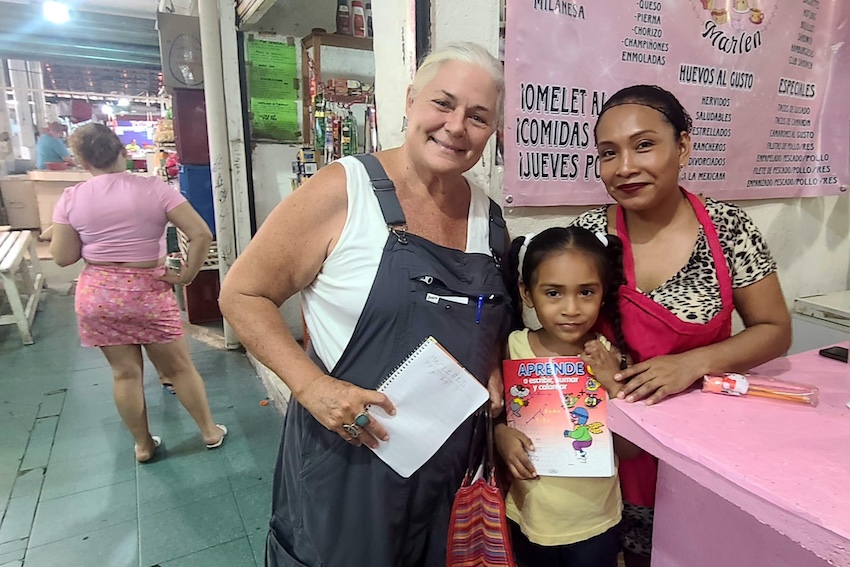
At the time, I was a member of Rotary International. So I wrote several significant grants to help the Netza School become a reality. Today, the six-language Netza School is celebrating 30 years and serves over 400 students. It teaches not just in the national language of Spanish, but also in Nahuatl, Mixtec, Amuzgo, Tlapanec, and some English. Marina’s vision of access to education for all has become a reality. Not only that, but a second multilingual primary school modeled after the Netza School is now serving over 325 children daily.
Literacy, learning kits and backpacks change lives now
In December 2024, I launched Libros Para Niños-ZIH (LPN-ZIH) as a simple community outreach project. We hand out books, pencils and complete learning kits, plus personal hygiene supplies like toothbrushes, toothpaste and hand sanitizer to any child or family in need. Since its inception, LPN-ZIH has assisted over 150 children and families.
I also have a handful of women whom I am teaching to read and write in Spanish. By giving them basic instruction and learning materials, they can study and practice along with their children. (Yes, we learn some English, too).
LPN-ZIH’s current campaign, Project Mochila, has a summer goal of providing 100 quality new backpacks filled with books, learning aids and essential school supplies for working children like Dylan and Edward. Books and school supplies are expensive in Mexico, but essential if learning is to take place.
I help children like Evan, age 4, in our Mercado Municipal and Jade, age 3, recover from cell phone addiction and prepare for kindergarten by providing them and their parents with an alternative. Books, crayons, basic skills booklets, and learning aids that they can keep and use daily at home or in their places of business. When kindergarten time comes, these children are prepared mentally and emotionally and have a quality backpack with the necessary supplies to succeed in school.
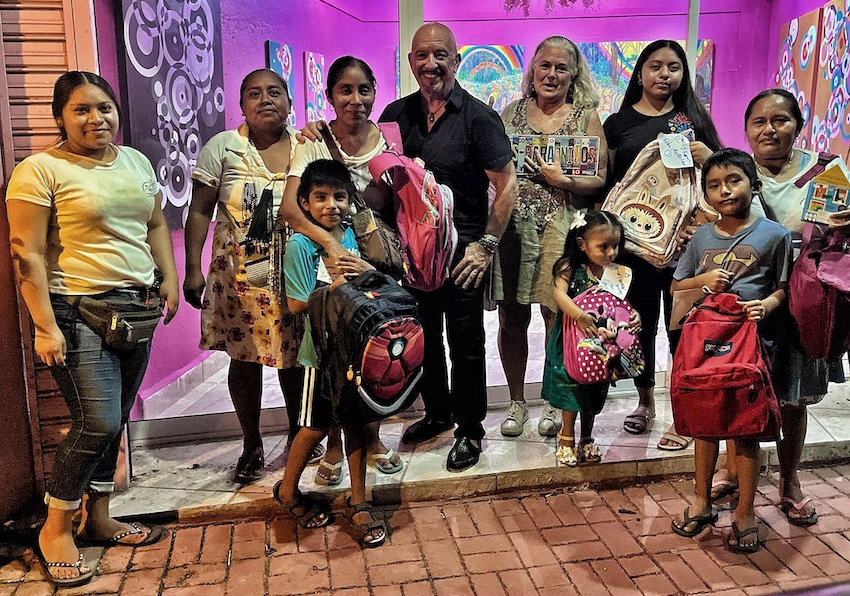
I follow up with periodic visits and conversations with my market and beach children to see how they are progressing. I offer a mini lesson of 15 to 20 minutes, feed them more books, and sometimes ice cream. First books for young mothers and parents are also offered. I encourage them to use books and traditional learning aids with their children. Not cellphones, which can negatively impact cognitive and social-emotional development, including delays in language acquisition, memory, attention and problem-solving skills. Blue light emissions can also disrupt a child’s natural sleep cycle.
The cost of going back to school
The New York Times recently reported that in the U.S., parents of children in kindergarten to high school spend an average of $144 on basic back-to-school supplies. Add new clothing, sports equipment and books, and that total jumps as high as $850 per child.
In Libros Para Niños-ZIH’s current backpack project, a new, fully loaded backpack for a particular child costs US $40 or 750 pesos. We follow up with the children and families to keep them motivated and engaged and give them more books and supplies, as needed.
Literacy creates social inclusion. More hours spent learning and in school increase the chances of success in later life. As a career educator in North America and an activist in education for all in Mexico, I have witnessed the evidence. Children who I met 20 years ago as chicleros have been able to complete high school or university and are dedicated parents, accountants, teachers, nurses, doctors and engineers. Becoming skilled, life-long learners and having respect for their language and economic diversity has made all the difference.
You can help. LPN-ZIH welcomes donations of books and school supplies if you plan to visit Zihuatanejo, and financial contributions that help us acquire backpacks, books, learning aids and personal hygiene items. We work year-round, but our summer goal is one hundred backpacks by August 20, 2025. Obtain information or donate by contacting me directly.
Lisa B. Martin is an award-winning international advocate for global literacy, an author, and a multilingual educator. Her forthcoming memoir, THE ZIHUA DIARIES, chronicles her 25 years of journeys into Mexico, engaging with its rich cultural diversity and its people. She also hosts weekly ZIHUAwriters meetings and organizes creativity, writing and cultural retreats for personal transformation.
